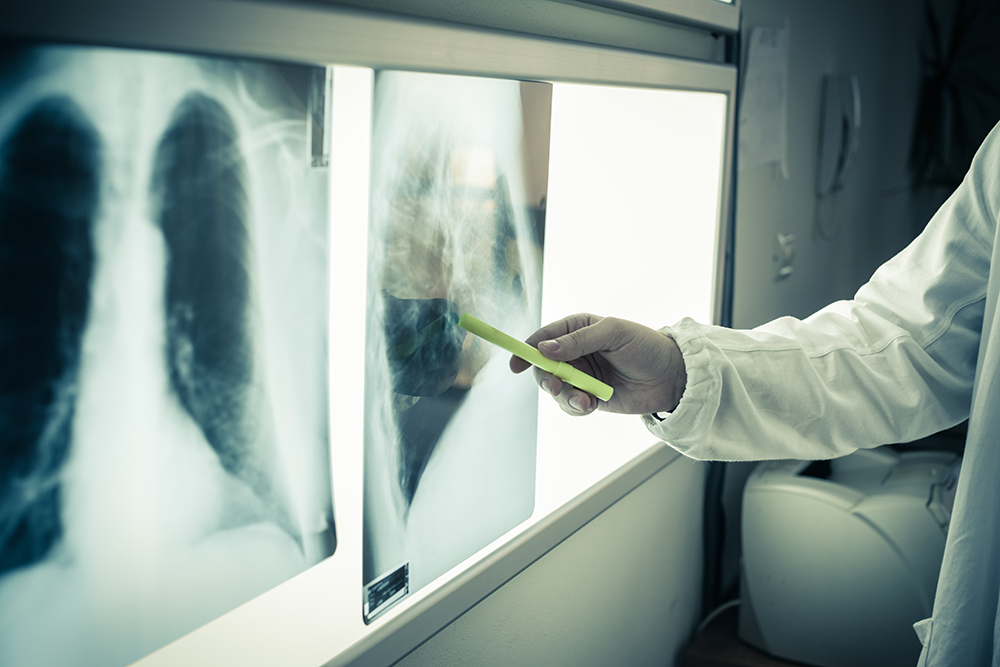
Lung Cancer Remains the Leading Cause of Cancer Deaths in the U.S.—Why Early Detection Could Save Your Life
November marks Lung Cancer Awareness Month—and with it, a renewed push from local health leaders to highlight the urgent need for early screening and education. Lung cancer continues to be the leading cause of cancer-related deaths in the United States, responsible for more fatalities than breast, prostate, and colorectal cancers combined.
According to the National Cancer Institute, an estimated 226,650 Americans will be diagnosed with lung and bronchus cancer in 2025. Tragically, 124,730 are expected to die from the disease this year alone, accounting for more than 20% of all cancer deaths nationwide. Yet amid these sobering statistics lies a critical opportunity: when detected at an early, localized stage, the five-year relative survival rate jumps to nearly 65%—compared to under 10% when diagnosed after the disease has spread.
“Since lung cancer has a high prevalence in smokers and tends to fly under the radar until late, screening for the high-risk group is vital,” explained Dr. Fadi Abu-Shahin, medical director of the hematology and oncology clinics at Houston Methodist Willowbrook Hospital. “Early detection is the only way to achieve a high cure rate.”
Houston Methodist Encourages Screening for Those at Risk
Dr. Abu-Shahin and the Houston Methodist Cancer Center are urging adults who fall into high-risk categories to take action during Lung Cancer Awareness Month. The American Cancer Society and U.S. Preventive Services Task Force recommend annual low-dose CT scans for adults aged 50 to 80 who:
- Currently smoke or quit within the past 15 years, and
- Have a history of smoking a pack a day for 20 years or more
Despite long-standing links between smoking and lung cancer—about 9 out of 10 lung cancer diagnoses are tied to cigarette use—non-smokers are not immune. Exposure to secondhand smoke, radon gas, asbestos, radiation therapy to the chest, and even a family history can increase risk.
Mobile Sidebar Ad
Disparities and Trends: Lung Cancer in Houston and Beyond
Lung cancer doesn’t impact all demographics equally. Data from the National Cancer Institute shows higher incidence rates among non-Hispanic Black men and non-Hispanic white women. The median age at diagnosis is 71, and most cases are diagnosed between the ages of 65 and 74.
Encouragingly, lung cancer incidence and death rates have been declining—thanks in part to lower smoking rates and advances in treatment. From 2013 to 2022, new cases decreased by an average of 2.4% annually, while death rates dropped by 4.2% each year from 2014 to 2023. However, much of this progress hinges on early identification.
Dr. Abu-Shahin’s Passion for Personalized Care
Dr. Abu-Shahin, a board-certified medical oncologist and internist at Houston Methodist Willowbrook, brings a global perspective to his work, having trained at the University of Jordan and East Tennessee State University. He treats a wide range of cancers and blood disorders—from hemophilia and anemia to sickle cell disease and all forms of malignancy.
“Each cancer is a unique disease,” Dr. Abu-Shahin said. “This maintains my skills in treating many illnesses but it does require more work in order to stay up to date with all the advancements that happen in the field. In order to treat cancer, you need to know all the specifics for that particular type before you finalize a treatment plan for the patient.”
Dr. Abu-Shahin is especially committed to staying current with evidence-based practices and delivering care with empathy. “I am passionate about providing excellent care for my patients,” he added. “I want people to know that if they come and see me, they’re going to be taken care of. They’re part of my family.”
Mobile Sidebar Ad
A Call to Action for Greater Houston Area Residents
As part of Lung Cancer Awareness Month, Houston Methodist encourages individuals across Greater Houston and surrounding communities—including Spring, The Woodlands, Tomball, and Cypress—to talk with their primary care doctors or cancer specialists about whether they meet the screening criteria.
While cancer survival rates overall are improving, lung cancer remains one of the most devastating when left undetected. Data from the National Cancer Institute shows that only 28.1% of patients diagnosed with lung and bronchus cancer survive beyond five years. Yet that number jumps significantly when the cancer is caught early.
There are currently over 635,000 Americans living with a history of lung and bronchus cancer—proof that survival is possible.
More Resources
- For information on Houston Methodist’s cancer services, visit houstonmethodist.org
- To learn more about lung cancer risk and screening guidelines, visit the National Cancer Institute at cancer.gov
- Speak with your doctor or call 1-800-4-CANCER for help finding screening options near you
Because when it comes to lung cancer, time is not just money—it’s life.
 Tiffany Krenek has been on the My Neighborhood News team since August 2021. She is passionate about curating and sharing content that enriches the lives of our readers in a personal, meaningful way. A loving mother and wife, Tiffany and her family live in the West Houston/Cypress region.
Tiffany Krenek has been on the My Neighborhood News team since August 2021. She is passionate about curating and sharing content that enriches the lives of our readers in a personal, meaningful way. A loving mother and wife, Tiffany and her family live in the West Houston/Cypress region.








